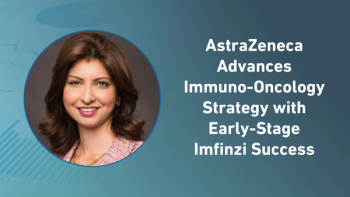
Platform Technologies Emerge in Biopharma
Doug Manion, CEO of Kleo, explains how platform technology essentially involves the engineering of antibodies and biologics using linear process chemistry to enhance drug effectiveness.
We have noticed the emergence of an interesting trend that is popping up in the emerging biopharmaceutical industry: platform technologies, which differ from one company to the next. In Kleo’s case, platform technology essentially involves the engineering of antibodies and biologics using linear process chemistry to enhance drug effectiveness. In this interview, Doug Manion, CEO of Kleo, will explain.
Moe Alsumidaie: Can you provide some details on Kleo’s proprietary technology platforms? How are these different than biologics?
Doug Manion: Everything we do uses synthetic chemistry. Unlike biologics, our drugs are not based on cellular production. They’re all made through linear process chemistry.
We’re taking three approaches:
- Antibody recruiting molecules (ARMs) are synthetic bispecific molecules that redirect a patient’s own polyclonal antibodies to recruit immune effector cells to the site of a tumor for clearance.
- In synthetic antibody mimics (SyAMs), the antibody effector mechanism has been removed as the intermediary and replaced with synthetic immune cell activators.
- MATES are monoclonal antibody (mAb) therapeutic enhancers. They allow us to take an off-the-shelf, commercial mAb and, in a single chemical engineering process, add onto it an activator from the SyAM program to turn, for instance, Rituxan into a CD3 binding and activating anti-CD 20 Bispecific T cell engager (BiTE). We can do the same with other mAbs, all in a way that is site-directed and specific.
Moe Alsumidaie: How do Kleo’s IND designs benefit the studies’ efficacy and safety endpoints, given that most molecules fail in preclinical models?
Manion: A successful new drug has to fill an unmet medical need in a clever way, be attractive for patients to try despite their severe disease, and focus on areas where there's a high opportunity to show enhanced efficacy and safety, with limited competition.
Given the unique characteristics of our molecule relative to other CD38-targeting drugs (no depletion of hematologic cells and no natural killer (NK) cell depletion via fratricide), our investigational drug can be used in the immediate post-transplant period where patients are growing back their immune system through autologous STEM cell transplantation. No drugs are currently approved in this setting and other CD38-targeting agents (Darzalex, isatuximab) cannot be used due to NK cell depletion.
We have designed a trial with short endpoints (negative readout for minimal residual disease at day 100 post-tranplant) that directly correlates with curing disease. Our drug acts by redirecting activated NK cells to the site of the tumor to wipe out remaining tumor cells post-induction and myeloablative therapy. We aim to produce cures in first line therapy, greatly enhancing a patients quality of life.
Moe Alsumidaie: Can you describe clinical operational challenges you faced with executing your trial?
Manion: We have yet to begin our trial so we can only predict at this point where we anticipate challenges. Typically, the greatest challenges one faces when executing a trial is first successfully navagating through regulatory and local ethics committee approvals and then optimizing patient recruitment to stick to aggressive timelines. We have several efforts in place to minimize risk on both fronts.
Moe Alsumidaie: Describe your site selection strategy. How do you plan to scale investigational product manufacturing, when you start conducting multi-centered trials?
Manion: It’s most cost efficient to develop drugs with very high therapeutic impact, vis a vis standard of care, instead of targeting incremental benefit, which requires extremely large, time-consuming studies. The greater the therapeutic effect, the smaller the patient population needed to show superiority, and the greater the trial site buy-in. We assess the state of the advocacy presence and the existence of patient databases in every disease we target. We prefer prevalent populations, where existing patients can be enrolled, over incident populations, which are harder to enroll because they require finding patients right after another treatment modality failure.
Our initial study is a unique, high-tech approach, and Dana-Farber is one of the few sites in the world that's doing work with autologous NK cells. But, this manufacturing approach is scalable for multi-centered trials. Other academic institutions could easily do the manufacturing because it's similar to the local manufacturing that was required for some of the first-generation CAR-T drugs. We’re also initiating partnering talks with some companies working on allogeneic NK cell therapies, which would make NK cells available that could be used in at multiple centers. This would further enhance scalability.
Moe Alsumidaie: This will be a primary, first-line therapy?
Manion: This would be a single-dose, NK cell-based, combination therapy, combining the activated and expanded NK cells from the patient with our KP1237 “homing” molecule. If not completely successful, we could consider giving a second dose of the combination therapy. As the patient's own immune system is coming up, and producing more NK cells, we could begin systemic administration of our drug.
Moe Alsumidaie: Will your drugs be used in early-stage or late-stage cancers?
Manion: Our technology uses a highly modular, efficient and effective mechanism that can redirect more antibody than bio-engineered antibodies, and is safer. We have two different clinical paths for targeting CD38, primarily for myeloma. We have an advanced program for prostate cancer targeting PSMA, and several other undisclosed programs targeting different hematologic or solid tumors.
We aim to treat earlier in the treatment algorithm with our ARM technology. First, the tremendous safety profile shown to date affords the opportunity to treat earlier stage patients due to the proposed risk/benefit profile. Also, our mechanism utilizes an intact immune system which is an additional reason to treat earlier in the treatment protocol.
There are currently no mAb therapies approved for prostate cancer. Our PSMA antibody redirecting molecule can turn all of a patient’s IgG1 and IgG2 into anti-PSMA antibodies. It has shown robust tumor inhibition and even regression of prostate cancer in animal models.
Kleo’s PSMA binder is very small. Kleo has proven that when small enough, our agents have oral bioavailability-a big advantage for patients and investigators at prostate cancer trial sites.
Most biologics being tested are for later-stage therapies on metastatic, castrate-resistant prostate cancer patients, who have high therapeutic morbidity. Oral therapies are being tested in much earlier lines that are competing against antiandrogens. Earlier intervention combined with our unique approach increases patients’ opportunity to do well.
Moe Alsumidaie, MBA, MSF, is a thought leader and expert in the application of business analytics toward clinical trials, and Editorial Advisory Board member for and regular contributor to Applied Clinical Trials.
Newsletter
Stay current in clinical research with Applied Clinical Trials, providing expert insights, regulatory updates, and practical strategies for successful clinical trial design and execution.





.png)



.png)



.png)
.png)
